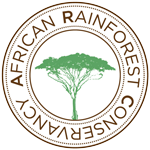ARC is fortunate to partner with numerous professionals who have dedicated their careers to researching and protecting Tanzania’s diverse flora and fauna (in case you missed it, be sure to check out our Incredibly Unique Animals posts that explore the endemic animals of Tanzania). Every Tuesday for the next eight weeks, this blog series will take you behind the scenes to give you a candid portrayal of the lives of a diverse group of conservationists – you’ll learn about their current research, favorite species, and what inspires them to do their work. If this is your first time visiting this series make sure to check out our past interviews with Trevor Jones and Katarzyna Nowak, co-directors of the Udzungwa Elephant Project in Tanzania, and evolutionary biologist Dr. Simon Loader.
Today, we stray from Africa to introduce you to Kris and Doug Tompkins who will be the recipients of ARC’s 2012 New Species Award at our April 11th Artists for Africa benefit. Read on and we think you’ll agree that this husband-wife team is more than deserving of this special award presented annually to champions of the environment.
Visionary champions of the planet, Kris and Doug Tompkins together have protected more land than any other private individuals—nearly 2.2 million acres, in Chile and Argentina. The couple’s business success (Kris as longtime CEO of Patagonia, Inc; Doug as founder of North Face and Esprit) has been rivaled by their accomplishments as conservationists, based on a similar entrepreneurial approach. Through foundations they have established, Conservacion Patagonica and Conservation Land Trust, Kris and Doug have established two national parks and are in the process of creating three more, including Chile’s future Patagonia National Park.
In creating new national parks, their conservation work protects and restores wildlands, biodiversity, and healthy communities in ecologically critical areas of the Southern Cone, from subtropical wetlands to temperate rainforests to steppe grasslands. Innovative programs focused on landscape restoration, endangered species research and reintroduction, community outreach and environmental education complement land conservation. Through restoring and managing organic farms and jumpstarting ecotourism, the Tompkins have created models of sustainable, environmentally-responsible local economies in the regions they live and work.
Their team of conservationists is reintroducing giant anteaters to the wetlands of Ibera, in northeastern Argentina, conserving some of the last stands of millennia-old Alerce trees in south Chile, and protecting the endangered Huemul deer of Patagonia. Meanwhile, thousands of schoolchildren have enjoyed their eco-education programs, hundreds of Chilean and Argentine students have gained experience as interns in conservation or agriculture, and dozens of communities have benefitted from parklands projects. The scope and vision of their work have spurred many others worldwide to engage in wildlands philanthropy and environmental advocacy.
Did you always know you wanted to be a conservationist? What has your journey been like becoming one?
D&K: We’re not conservation biologists, but certainly conservationists now. Neither of us thought we’d work purely in conservation, but we have both been outdoor adventurers for years, and always loved the natural world. Both of us got started doing environmental work through the companies we ran.
What research are you currently working on?
K: The project I’m currently working on is creating Patagonia National Park, which will be a 650,000 acre new public access national park in Chile’s Aysen Region. It’s a beauty!
What has been the most rewarding (discovery) of your career?
D&K: Reintroducing extirpated species. Working with extraordinary people on team. Watching grasslands and forests recuperate.
Do you have a favorite species? If so, which one?
D&K: Biodiversity in all its forms is what excites us most. K: Pumas and jaguars, actually felines in general, have a special place in my heart.
What has been your favorite research site(s) you’ve worked on?
D&K: We’re lucky enough to work in subtropical savannas, temperate rainforests, and Patagonian steppes. They are all incredible places to live and work.
If you could tell people one thing about species extinction, what would it be?
D&K: It’s forever. And it’s immoral–it’s the sign of an immoral society, which is not living within reasonable limits.
What inspires you to do this kind of work?
D&K: The pressures of species extinction and the urgent need to fight for biodiversity. The beauty of the places we’re working to protect, and the excitement and renewal that that beauty can bring. And the capacity of dedicated individuals to make a difference.
When not in the field what do you enjoy doing in your free time?
K: I like to write and watch films, and play with my dog.
What was the last book you read?
K: Biography of Robinson Jeffers
What is currently playing on your iPod?
K: Deertick, a recommendation from an intern here at Valle Chacabuco


Leave A Comment